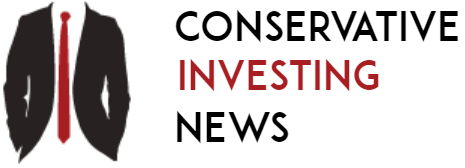Key Takeaways
- The 30-year fixed mortgage rate average was 6.89% on Thursday.
- Mortgage rates are tied to the 10-year Treasury yield, typically 2 or 3 percentage points above the yield.
- On Thursday, the yield was around 4.45%, its highest level in three months.
- The 10-year Treasury yield is the interest rate the government pays investors to borrow money for 10 years.
- Mortgage rates may stay elevated as long as the 10-year Treasury yield remains high.
Just a day after Donald Trump was declared the winner of the 2024 presidential election, the Federal Reserve cut its benchmark interest rate by 0.25 percentage points, bringing it to a target range of 4.50% to 4.75%. This was the second consecutive rate cut this year, following a larger 0.50 percentage point cut in September. At the same time, the stock market was hitting new highs.
Despite the Fed rate cut and post-election investor optimism, mortgage rates have remained elevated. When the Fed announced a rate cut at its September meeting, the national average for 30-year new purchase mortgages dropped to 5.89%, a low not seen in months, according to Zillow rate data provided to Investopedia. However, they quickly returned to over 6.00%, and when the Fed did a second rate cut in November, rates on 30-year new purchase mortgages shot back up to 6.93%, the highest rate since July 3.
While mortgage rates aren’t directly tied to the Fed’s actions, they’re impacted by economic factors. Mortgage rates are tied to the 10-year Treasury yield and it’s important to look at that number and where it’s heading to understand where mortgage rates might be in 2024 and 2025.
How the 10-Year Treasury Yield Impacts Mortgage Rates
The 10-year Treasury bond yield—the interest rate the government pays investors to borrow money from them for a decade—was around 4.45% on Thursday, the highest it has been in three months. This yield is often seen as an indicator of how confident investors are about the economy.
When investors are confident about the economy, they don’t feel the need to play it safe and put their money in a low-risk Treasury bond. For this reason, they may demand higher yields to compensate for the opportunity cost of lending money to the government versus earning better returns from higher-yielding assets, such as stocks. And when there’s less demand for Treasury bonds, prices drop.
The opposite happens when investors are pessimistic about the economy. Instead of putting their cash in riskier securities, investors tend to flock to lower-risk assets—like Treasury bonds—in times of uncertainty. This increased demand pumps up the prices of 10-year Treasury bonds and causes the yields to fall.
The 10-year Treasury bond yield and mortgage rates tend to move in tandem. Mortgage lenders use the 10-year Treasury yield as a benchmark to set their mortgage rates. They typically charge an additional 1 or 2 percentage points on top of the 10-year Treasury yield, though it may be as high as 2.5 percentage points in times when the economy is hot.
When Will Mortgage Rates Drop?
No one knows for sure when the 10-year Treasury bond yield or mortgage rates will decrease.
“While the recent Fed’s interest rate cuts will be helpful to consumers who have home equity loans, car loans, and other loans that are impacted by the prime rate, it’s not going to move the needle on mortgage rates,” said Melissa Cohn, regional vice president of William Raveis Mortgage. That’s because mortgage rates are not ultimately determined by the Fed and instead are based on economic data, Cohn said.
So, while the stock market has risen this month and the Fed cut rates, the 10-year Treasury yield is at its highest level in three months. Investors appear to be confident in the economy, which is humming along. So as long as economic factors point to a strong economy, and the 10-year Treasury bond yield remains high, mortgage rates will likely do the same.
How We Track Mortgage Rates
The national and state averages cited above are provided as is via the Zillow Mortgage API, assuming a loan-to-value (LTV) ratio of 80% (i.e., a down payment of at least 20%) and an applicant credit score in the 680–739 range. The resulting rates represent what borrowers should expect when receiving quotes from lenders based on their qualifications, which may vary from advertised teaser rates. © Zillow, Inc., 2024. Use is subject to the Zillow Terms of Use.
